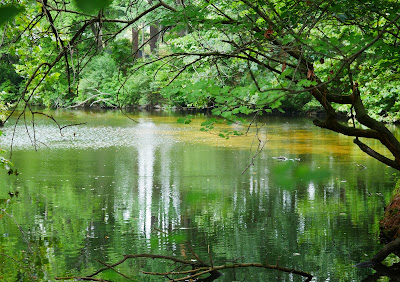A little background: founded in 1954, the Salisbury Zoo claims to be home to 150 animals--and just like every other zoo, I can't for the life of me account for that number! The impetus for the zoo was the unregulated release of wild animals in the city park where the zoo remains today. The first official animal was an abandoned fawn. In 1963, The Bronx Zoo gave the Salisbury Zoo its first Alpaca and American Bison. Over the years to come, the Salisbury Zoo narrowed its mission to focusing on species from the Americas.
Fast forward to 2017 and my first visit. By this point, the zoo had for its size, an impressive cadre of animals: a Jaguar, Alpacas, American Alligators, an Ocelot, Geoffrey's Spider Monkeys, Coatimundi, American Bison and Prairie Dogs. Also Capybara, Beaver, North American River Otter, White-tailed Deer, Flamingos, Macaws, Southern Rhea, Burrowing Owls and Roadrunners--and more. Two additional species in particular: The Spectacled Bear (a.k.a. Andean Bear) and the Red Wolf were foci of Species Survival Programs.
The bulk of the habitats were constructed during a boon time in the 1970's and were showing their age--wrapped in the "duct tape" and "chewing gum" of a caring and committed crew of keepers and support staff. In 2020, they lost their Association of Zoos and Aquariums (AZA) accreditation. Among the issues were the lack of a full-time veterinarian and deferred maintenance of aging infrastructure and habitat components. This led to the loss of the Jaguar, but the AZA provided a pair of Canadian Lynx in their stead. Also, support continued for the zoo's extremely successful Spectacled Bear reproductive program. One of the most fruitful in the country.
We'll begin this visit from the east gate with a cluster of habitats around the edge of the Wicomico River (a stagnant body of water that is more like an elongated pond that forms the northern border of the zoo. What is there:
- American Alligator Habitat
- Spectacled Owl Habitat
- The William Morgan Conservation Center (hosts exterior habitats with Reptiles and Amphibians)
- Two-toed Sloth
- Caribbean Flamingo
- Green-winged Macaw
What I saw. Alligator and Sloth no en casa. But here's the rest! Enjoy.
The East Gate Entrance. I had such a nice chat with a lovely young woman volunteering at the table just beyond the chartreuse gate house.
The current Spectacled Own habitat. Over the past few years, it's been home to other bird species. At one point a veritable flock of colorful "chatty" Sun Conures.
SPECTACLED OWL
Pulsatrix perspicillata
The William E. Morgan Conservation Center. It was intended to be an education center, but the volunteer confided to me that apart from the exterior Herpetarium habitats, it's basically a storage facility.
There are four habitats with 6 species
SPOTTED TURTLE
Clemmys guttata
AMERICAN FLAMINGO
Phoenicopterus rubus
Now, boys...let's get along!
GREEN-WINGED MACAW
Ara chloropterus
Wild Turtle viewing deck on the Wicomico River.

















No comments:
Post a Comment